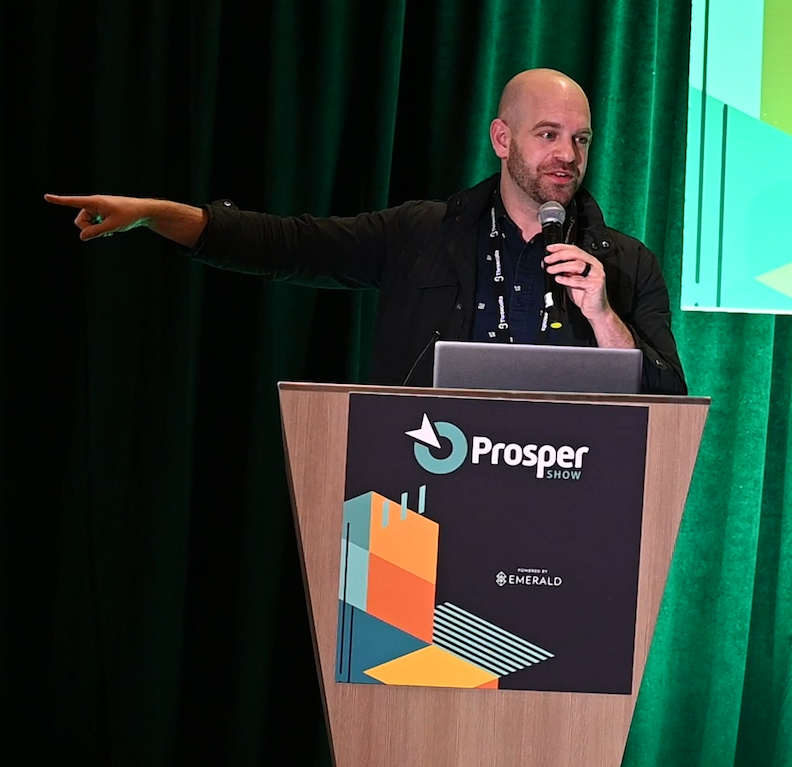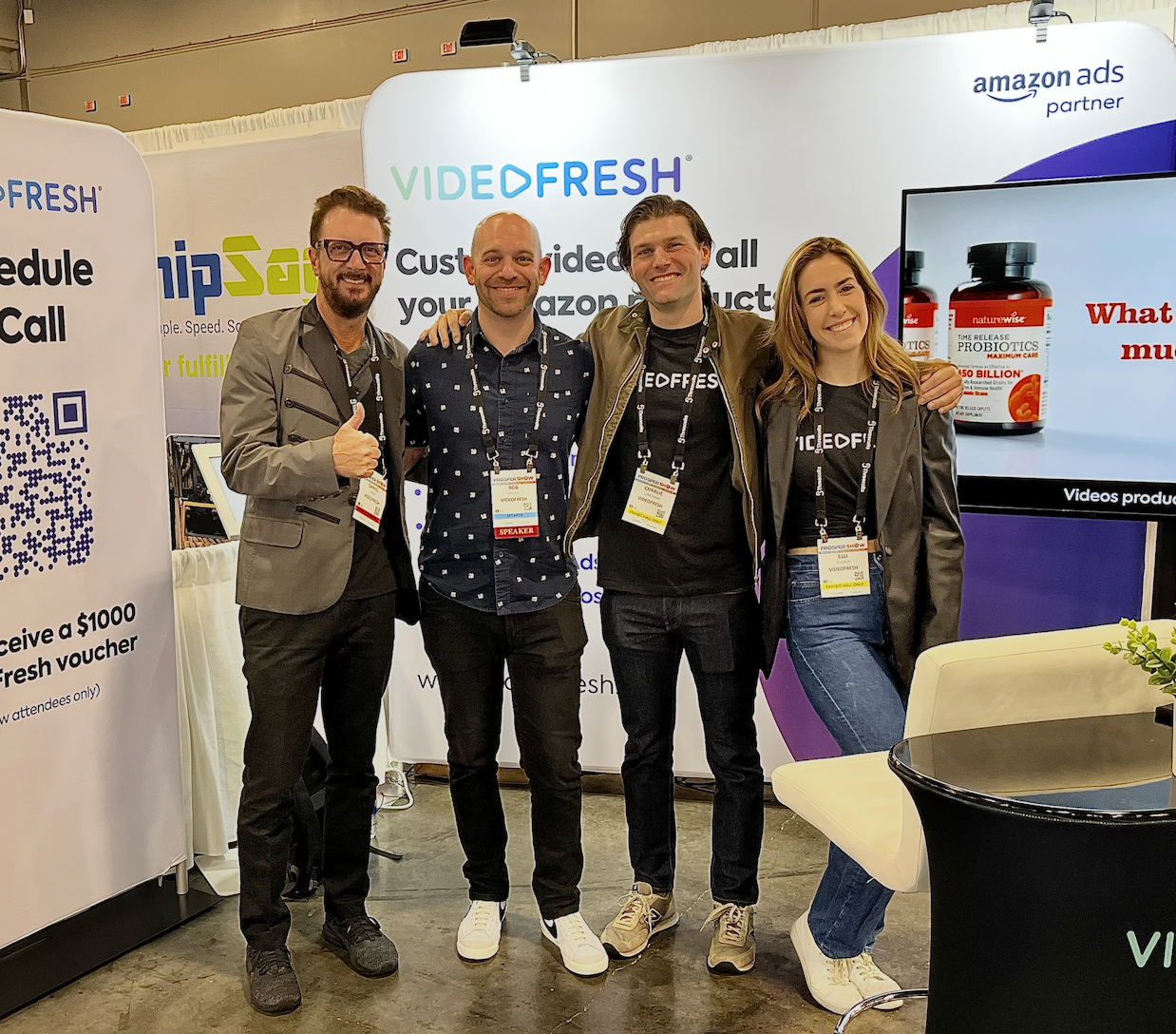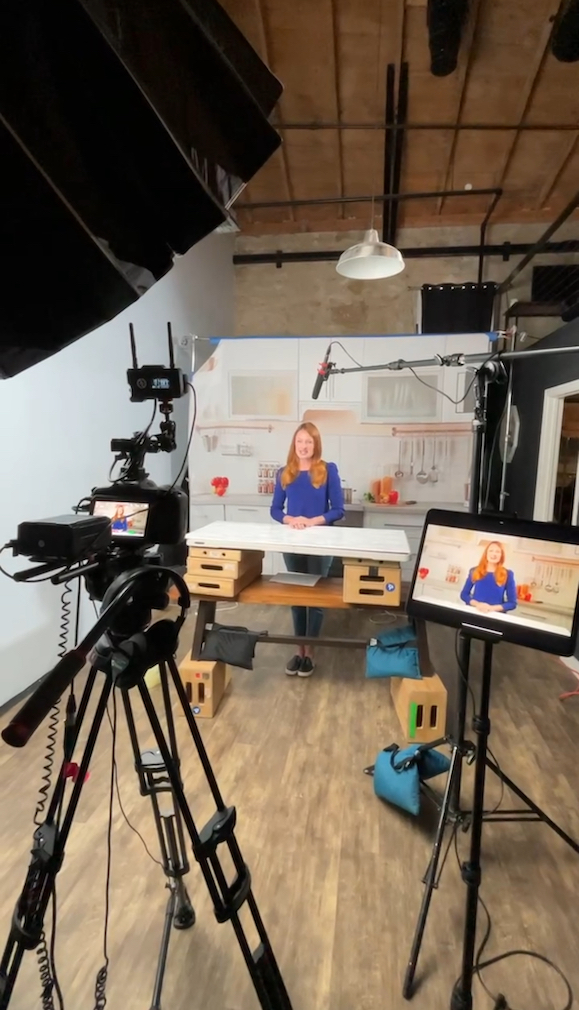July 11, 2025
PASADENA, CA – Rob Wiltsey, founder and CEO of Pasadena, Calif.-based VideoFresh, has been helping eCommerce brands unlock the potential of video for almost a decade. His company has produced thousands of videos for hundreds of brands in all major categories—generating more than $100M in revenue for clients.
With the arrival of generative artificial intelligence (GenAI), the video landscape is shifting again. We sat down with Wiltsey to talk about how video has evolved, where generative AI fits into the content mix, and what sellers should prioritize right now as the holiday season approaches.
 Prosper Show: How has marketing and advertising video evolved over the years?
Prosper Show: How has marketing and advertising video evolved over the years?
Rob Wiltsey: For brands, video content has gone from “nice-to-have” to non-negotiable. Five years ago, having a single polished product video might set your brand apart. Today, if you don’t have optimized, high-converting videos at every touchpoint—on your Amazon listings, in your sponsored brands ads, on social media, and in your retargeting campaigns—your content will not have nearly the same impact.
We engineer tactical data-driven performance content through a proprietary video strategy framework based on data from thousands of videos, optimized across hundreds of brands and products. We’ve A/B tested hooks, scripts, visuals, formats, and placement types, so when a client comes to us, we’re not guessing. We know what’s likely to convert and why, and we are obsessed with the optimal video “anatomy”. Clients aren’t coming just for creative ideas – they’re coming for effective content strategy, smooth execution, and strong video performance.
Prosper Show: How are you currently using generative AI in video?
Wiltsey: We were early to adopt generative AI technology across our workflow, and we were delivering fully AI-generated videos to paying clients as early as 2023. We can now create lifestyle ads using GenAI for certain product categories, offering new possibilities. We are using Generative AI to expand environments, touch-up products, create video variations, and generate entire clips from scratch. We are also using AI to analyze performance data to inform our creative process. The results are more effective videos on a faster production timeline, and often at a lower cost.
In terms of workflow, we’ve also adopted AI tools for idea generation, script drafting, and versioning. If a client wants three different ad angles for the same product, we can use AI to generate distinct visual approaches and storyboards quickly, then refine. It’s not a replacement for creative thinking; it’s a multiplier for our team’s insight and tactical strategy. The pace of improvement in these tools is astounding, though they require a lot of expertise to master and come with limitations.
 Prosper Show: What are the benefits of using generative AI in video?
Prosper Show: What are the benefits of using generative AI in video?
Wiltsey: With the right creative direction, generative AI can produce visually striking clips in a fraction of the time it used to take. That means faster testing, more variation, and more opportunities to find what works. For eCommerce in particular, we’ve used AI to create attention-grabbing intros, floating product visuals, and brand visuals that elevate perception without adding production days.
Prosper Show: What are the limitations of using GenAI in video?
Wiltsey: The limitations are very real, especially when you need precision. AI isn’t perfect at replicating product details consistently across multiple clips in a sequence. So if you’re showing how a product functions, how it fits on a body, or what its packaging looks like in use, you still need live-action. AI is also notoriously tricky when it comes to continuity, anatomy, and usability—things you can’t afford to get wrong on platforms like Amazon where accuracy is key.
Another limitation is creative control. The more specific your vision, the harder it is to get AI to comply. You can nudge it in the right direction, but often you need 10 generations to get one usable result. It’s powerful, but not magic. Without a team that understands the production and nuances of AI limitations, it can be frustrating to navigate.
Prosper Show: What is the biggest misconception about generative AI in video?
Wiltsey: One of the biggest misconceptions about generative AI is that it can easily create any video you imagine. People see a polished AI-generated clip online and assume it’s magical and effortless, but as anyone knows who has been hands-on with these tools, the reality is quite the opposite. Getting something truly usable often involves trial and error with prompts, jumping between different tools, fixing things in editing software, and still not quite getting the result you need.
 Most of the impressive demos online are carefully crafted to stay within the “sweet spots” where the technology performs well. They avoid the challenges you’re likely to face when trying to create a video that actually works for your product and brand. We have mastered these tools and can navigate within these “sweet spots” to deliver valuable solutions, and we’ll continue to ride this wave of technology over the coming years.
Most of the impressive demos online are carefully crafted to stay within the “sweet spots” where the technology performs well. They avoid the challenges you’re likely to face when trying to create a video that actually works for your product and brand. We have mastered these tools and can navigate within these “sweet spots” to deliver valuable solutions, and we’ll continue to ride this wave of technology over the coming years.
Another misconception that I’m very passionate about is that just because it is quicker to make certain videos now using GenAI, that doesn’t mean that it is now easier to make an effective video. It has always been difficult to create a video that deeply resonates with your audience and makes them feel something about your brand, your products, etc. GenAI does not make this any easier than with traditional production, and the brands that are going to earn mindshare will be the ones that stay inspired with their content and avoid the temptation to get “lazy” with their creativity.
Prosper Show: What should online sellers be doing now to prepare for the holiday season?
Wiltsey: If you’re reading this and haven’t started your Q4 video strategy, you need to move—fast. Every day you wait, you’re losing opportunity to test, optimize, and scale before the holiday wave hits.
Here’s what smart sellers should be doing right now:
1) Plug the holes in your listings. If your bestsellers don’t have video—or they’re still using generic brand ads—fix it. Product-specific, benefit-focused content outperforms general storytelling every time.
2) Build campaign creative tailored to the platform. Your Amazon Sponsored Brands video isn’t going to work on Meta or TikTok. Tailor your videos to the platform, the user behavior, and the mindset of your buyer. We’ve seen ROI lift just by matching message to medium.
3) Use AI to create variations—but don’t skip strategy. This is where we shine. We take a proven creative formula and use AI to rapidly produce multiple variations—then test, measure, and refine. It’s not random creativity. It’s strategic iteration.
4) Don’t forget retargeting content. Everyone focuses on top-of-funnel, but a good product demo, comparison video, or testimonial ad targeted at warm traffic can double your conversion rate.
5) Invest early. Waiting until November to start production means you’ll either pay more or settle for less. The brands that win the holidays are the ones whose creative is locked by October and whose campaigns are scaling by Black Friday.
Prosper Show: In the spirit of an AI summary, how would you summarize your current thoughts about GenAI?
Wiltsey: Generative AI is exciting, but it’s not a shortcut to success. The brands that are winning right now are the ones who combine it with a deep understanding of content strategy, platform behavior, and performance metrics. At VideoFresh, we’re a partner for your video performance. We bring tested frameworks, deep platform knowledge, and the creative horsepower to execute at scale. That’s why our clients trust us to drive real results, not just make pretty videos. We’ve helped generate more than $100 million in revenue for eCommerce brands around the world.
